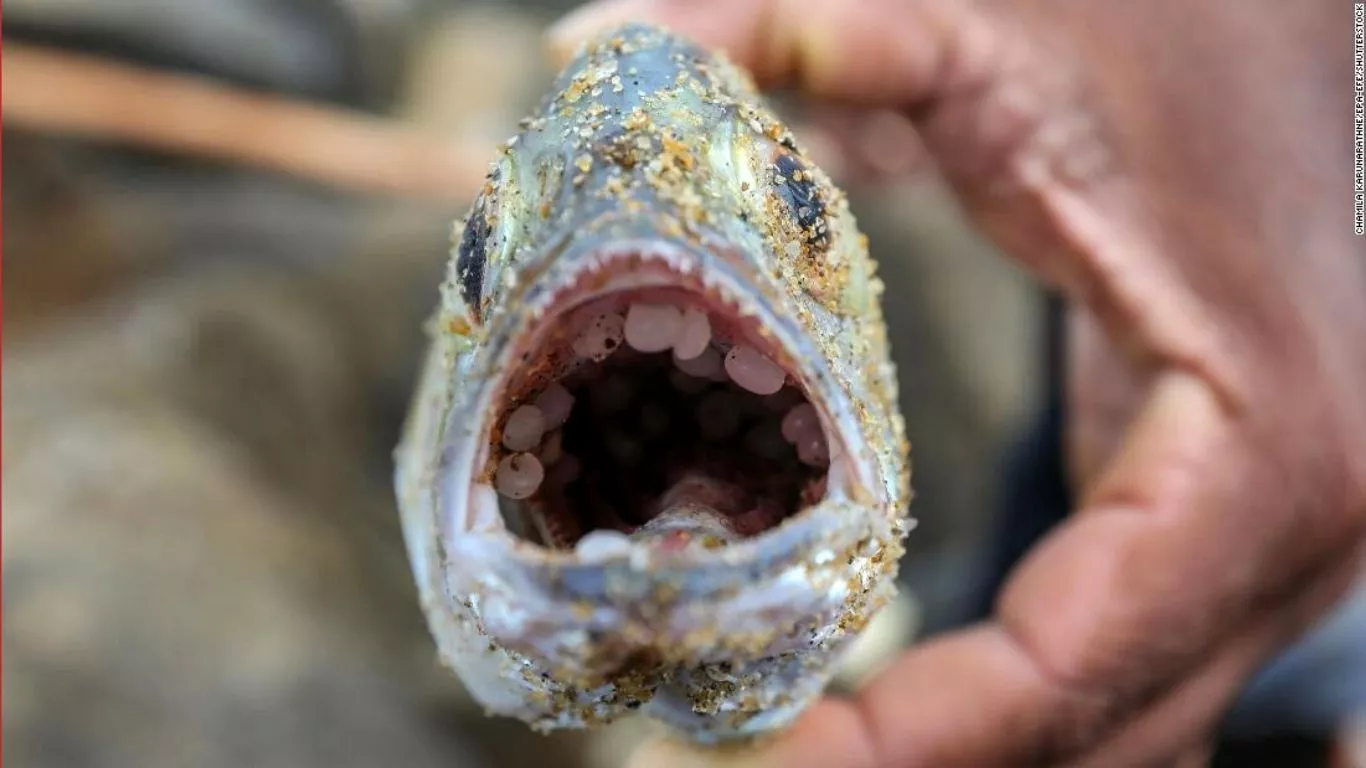
By Fatema Idris
What happened?
The Singapore-flagged X-Press Pearl was carrying 1,486 containers, including a cargo of nitric acid and other hazardous chemicals, when it caught fire in May 2021 off Sri Lanka’s western coast. With the fire burning out of control, the ship eventually sank about 18 kilometers (11 miles) offshore, and with it the cargo. This included the estimated 75 billion nurdles (plastic pellets) that spilled into the ocean or were burned in this single marine accident, which was classified by the UN as Sri Lanka’s “worst maritime disaster”.
Within five days of the freighter catching fire, the nurdles reached Sri Lanka’s golden, western beaches. Typically, white and the size of a pea, they also washed ashore with darker plastic chunks about 2.5 inches across—collections of burnt nurdles that had melted together. The biggest impact was not caused by the heavy fuel oil, nor was it the hazardous chemicals on board. The most significant harm, according to the UN, came from the spillage of 87 containers full of lentil-sized plastic pellets i.e., nurdles. Nurdles are the basic building blocks for all kinds of plastic items. This is what has fouled a massive arc of Sri Lanka’s coastline.
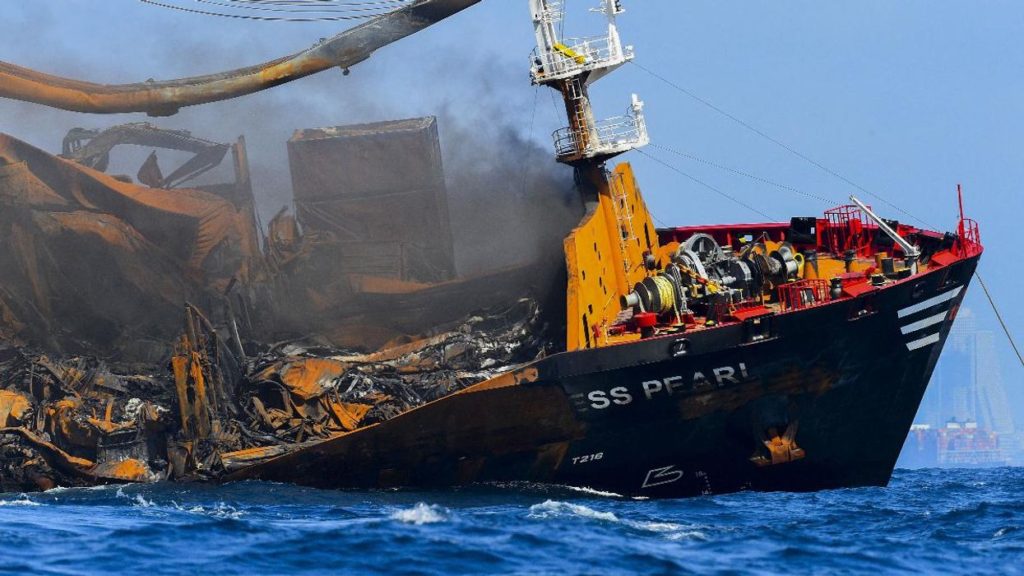
What has happened since?
Pellets are still washing up on shore and being cleared away by volunteers, while Sri Lanka tries to claim damages from the ship’s Singapore-based operators. Sri Lanka has received $3.7 million as initial compensation, but experts say the full compensation for the environmental damage could be as high as $7 billion — a figure that would be a lifeline for Sri Lanka as it experiences the worst economic crisis in its history.
The government carried out an initial cleanup of the beaches, but subsequent cleaning was done by volunteers like the Pearl Protectors, a youth organization. Under the Pearl Protectors, the “Nurdle-free Sri Lanka” campaign was created, which is one of the longest-running and largest volunteer campaigns in Sri Lanka. They’ve collected over 1.5 metric tons of nurdles from different beaches by hosting 35 major cleanups across the island, covering 4 districts with the help of around 2000 volunteers. They have also received support from the Sri Lanka Coast Guard to set up ‘nurdle portals’ which allow people to conduct their own independent clean-ups with the use of tools and sieves provided, which intend to be further improved through the introduction of faster and more efficient technology.
But more nurdles keep washing up on our beaches, and with the island currently experiencing the southwest monsoon, nurdles that had initially sunk to the seabed or were trapped in underwater structures such as corals have been washed free and are making landfall. Nurdles have now been reported to be seen on the shores of Batticaloa which is on the east coast of the country, the furthest Nurdles have been spotted and are predicted to go even further to areas like Jaffna and Trincomalee.
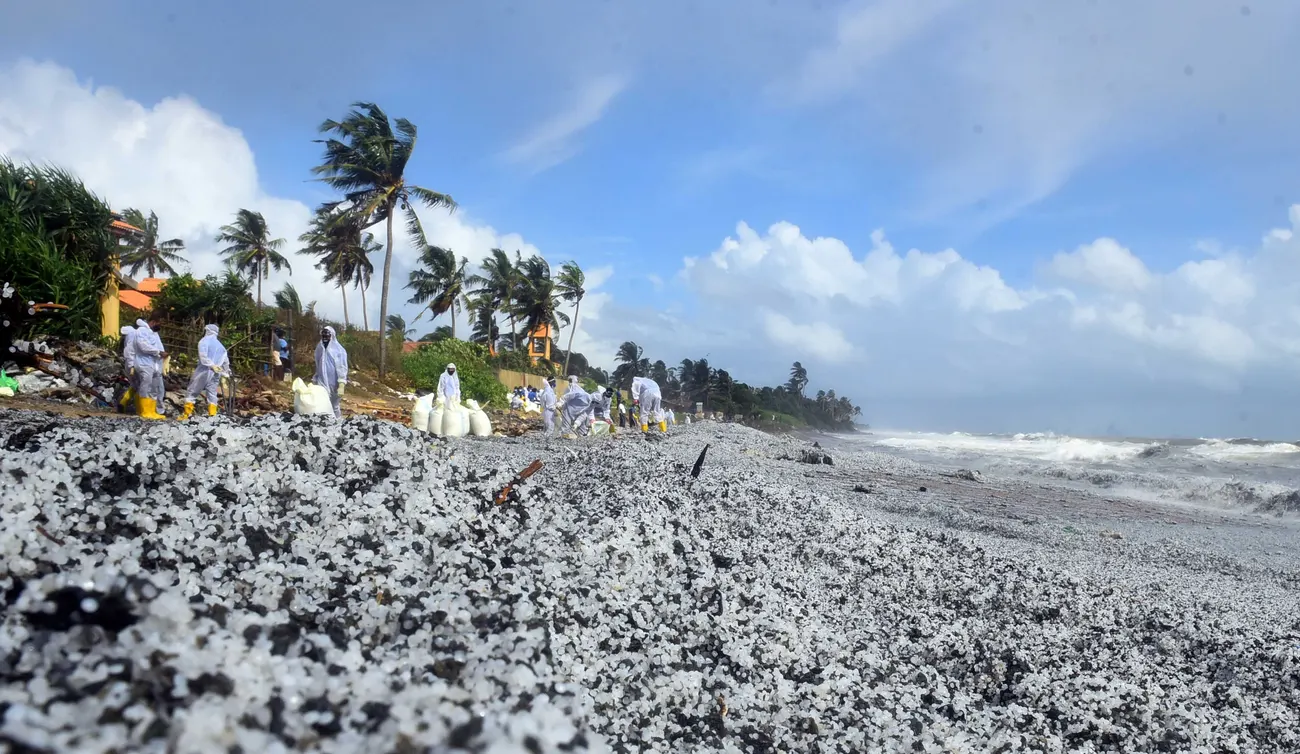
What we can do to help
As Sri Lankans, we must take responsibility to protect our island home, whether it is at an individual or government level, it is still not too late to do your part. The first step is to raise awareness of this issue, by understanding how detrimental nurdles and microplastics are to not only marine animals but to entire ecosystems, our generation, as well as many more to come. Education and widespread recognition of this dilemma must prevail to ensure the message reaches the right people. Secondly, participation in clean-ups on weekends will help speed up the recovery process from this disaster, whether it is done as a school, company, or any other organization.
You are welcome to join the clean-ups by registering as a Pearl Protector volunteer on pearlprotectors.org, while also helping to advocate to prevent a spill like this in the future. We must also reduce our dependence on single-use plastics like plastic bottles, plastic straws, and plastic bags in order to limit the demand for Nurdles that need to be shipped to Sri Lanka.
Currently, there are no laws that explicitly state penalties for nurdle pollution, thus the Pearl Protectors’ Advocacy team has created a petition which calls for five main areas of action, including the need to issue domestic regulations to control nurdles and a national contingency plan to contain nurdles from potential spills in the future, as well as the effective ratification and incorporation of MARPOL, which is the main international convention that covers the prevention of pollution emanating from ships. It also includes strict enforcement of the existing bans on single-use plastics and expediting the process of banning or regulating other problematic single-use plastics and primary microplastics. This petition can be signed on the website change.org/nurdlefreelanka which has already garnered over 1000 signatures so far.
Their next plans are to take advocacy global and demand the International Maritime Organization to classify nurdles as ‘hazardous cargo’, as we need to take these proactive measures to move forward and prevent another disaster like this from occurring, not only in Sri Lanka but anywhere in the world.
Cover Image: CEJ Sri Lanka

Climate Change Impacts on Fisheries and Aquaculture in Sri Lanka
By Moira Alfred Sri Lanka, a tropical nation near the equator, is heavily reliant on its fisheries and aquaculture industry. However, this island, renowned as
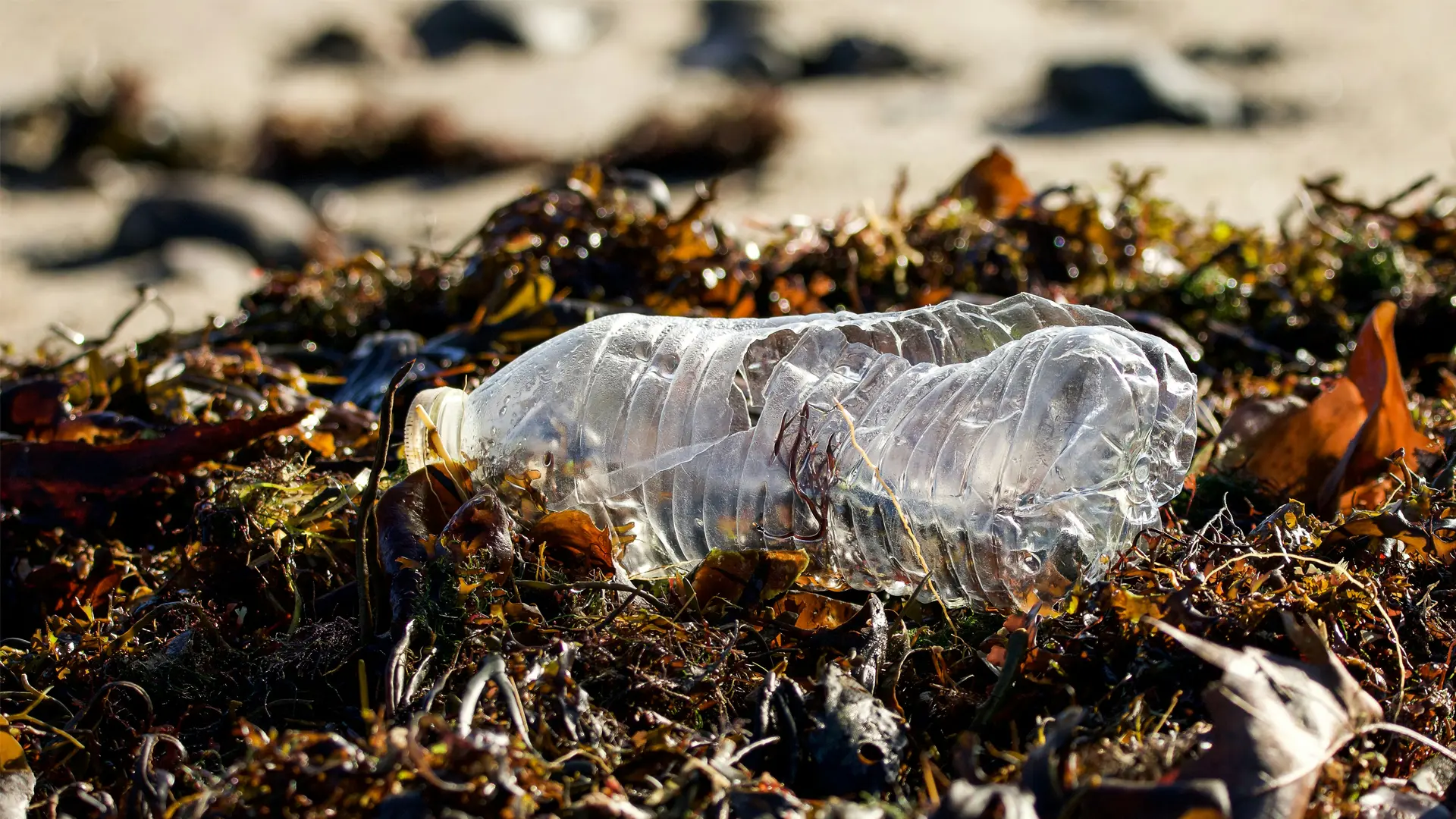
The Plastic Journey: From Oceans to Plates – Unveiling the Invisible Threat
By Dilshani Maralanda Plastic pollution has become a serious global issue, transforming our beautiful, biodiversity-rich oceans into vast dumping grounds. Unlike natural materials, plastics are
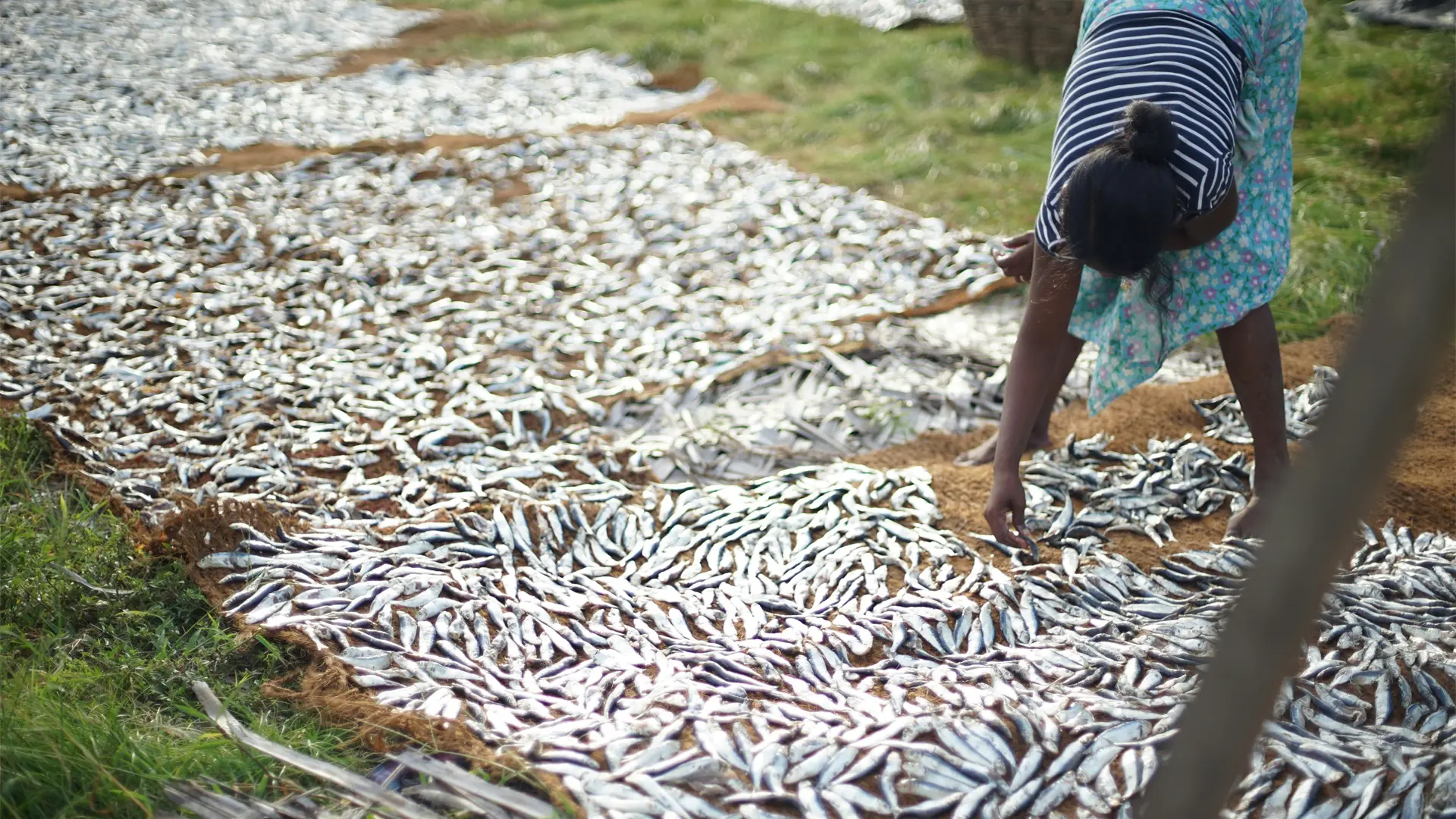
The Unsung Heroines of Sri Lanka’s Coastal Fishing Communities
By Nadithi Jagoda When we picture Sri Lanka’s coastal fishing industry, images of fishermen hauling in their daily catch often come to mind. But behind
